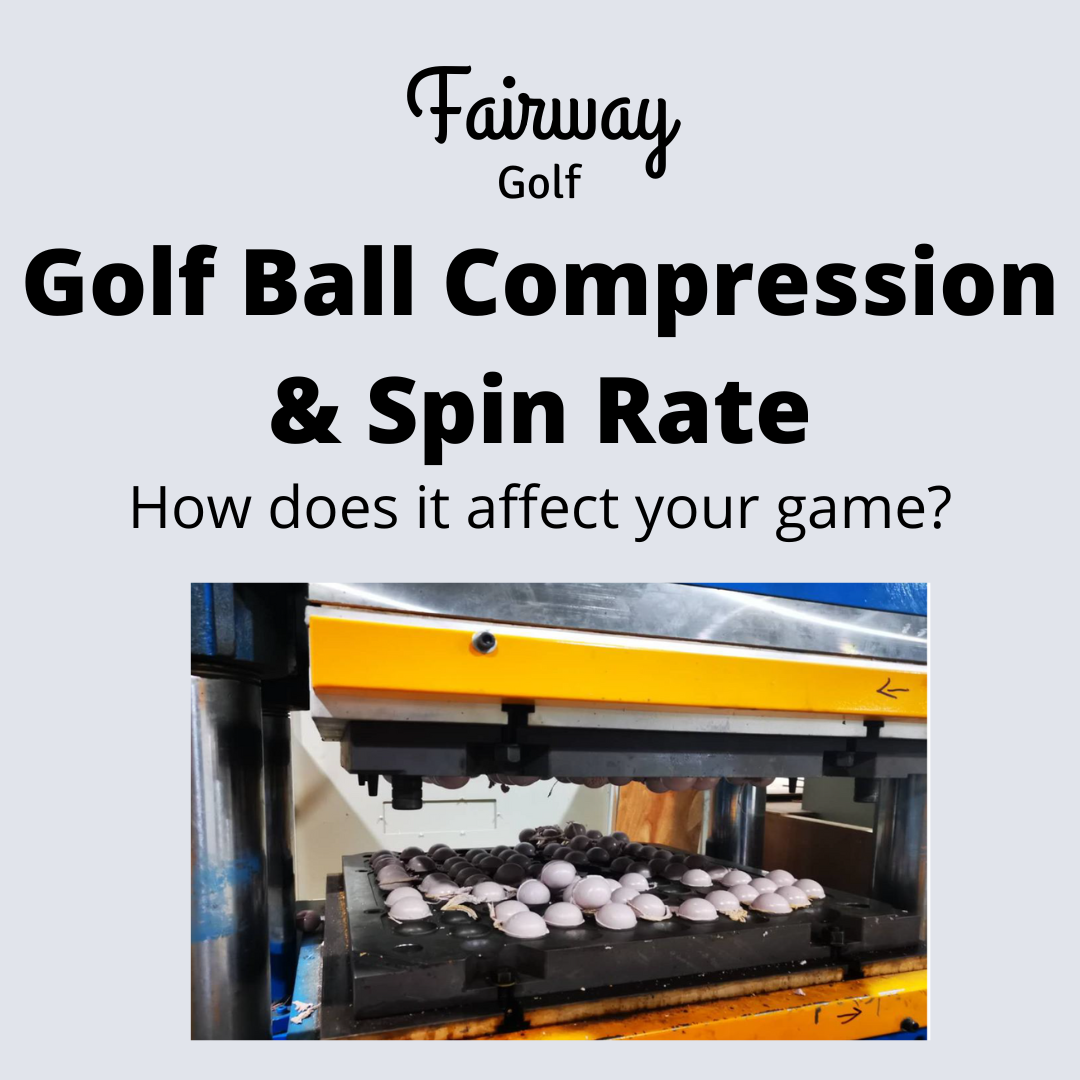
Ball Compression And Spin Rate - How Does It Affect Your Game?
Share
As golf has evolved and become more technologically advanced, the number of terms used to analyze a player’s game has increased tremendously. Whether it is launch angle, impact velocity, clubhead speed, you name it, there is most likely some aspect of the golf swing that has a term attached to it to analyze.
Two more to add to the list are ball compression and spin rate, two topics that are close to heart here at Fairway Golf. These two terms in particular are ones all golfers should pay attention to.
Ball Compression
Ball compression is a fairly straightforward term; the ball compression rate measures the force a clubface delivers as it interacts with the golf ball on the downswing. The golf ball essentially compresses against the clubface before rebounding into the air. Golf balls themselves are given compression ratings between 30 and 120, with 30 being the softest and 120 being the hardest. In order to determine your optimal compression rate, you need to have an idea of how fast you swing the golf club.
Once this has been determined, the general consensus is that lower swing speeds (below 95 mph) = lower compression golf balls and higher swing speeds (above 95 mph) = higher compression golf balls.
PGA Tour players with high swing speeds generally go with golf balls such as the Titleist ProV1, ProV1x and Taylormade TP5 as both have compression ratings over 90. On the other hand, mid-to-high handicap players who have lower swing speeds use 70 rating or lower golf balls such as the Bridgestone e6 or Callaway Supersoft.
Golfers who have lower swing speeds could certainly use higher compression rated golf balls, but they won’t be as effective as lower compression rated golf balls have multiple layers to reach the core. Reaching the core will lead to optimal distance and spin on a shot. Basically, it takes higher swing speeds to get through the inside core in higher compression golf balls.
Spin Rate
Spin rate measures ball spin when the club face reaches the golf ball on the downswing. An iron will generate higher spin than a driver. Generally speaking, as golfers goes from a driver down to a wedge the spin rate increases.
What is the ideal spin rate? To give an example with drivers, a low handicap golfer should have a spin rate below 3000 rpm, a mid-handicap around 3100 rpm and a high handicap over 3200 rpm. The rule of thumb for irons is that the spin rate off the club should roughly equal your iron number (a 7 iron should generate 7000 RPM of backspin, while a 4 iron should be around 4000).
Spin rate is important because it is what controls the trajectory of the golf ball. For fairway golf shots in particular, you want to be able to generate more spin the closer you are on an approach shot, which allows the golf ball to stop faster and / or provide backspin as well.
Fairway Golf Balls
To ensure you are hitting the right golf ball, check out Fairway Golf Balls fantastic selection of premium golf balls that suit any golfer’s game. Also, to learn more about how Fairway Golf balls stack up against ProV1 in terms of compression and spin rate, check out this article: Fairway Balls vs. the rest
